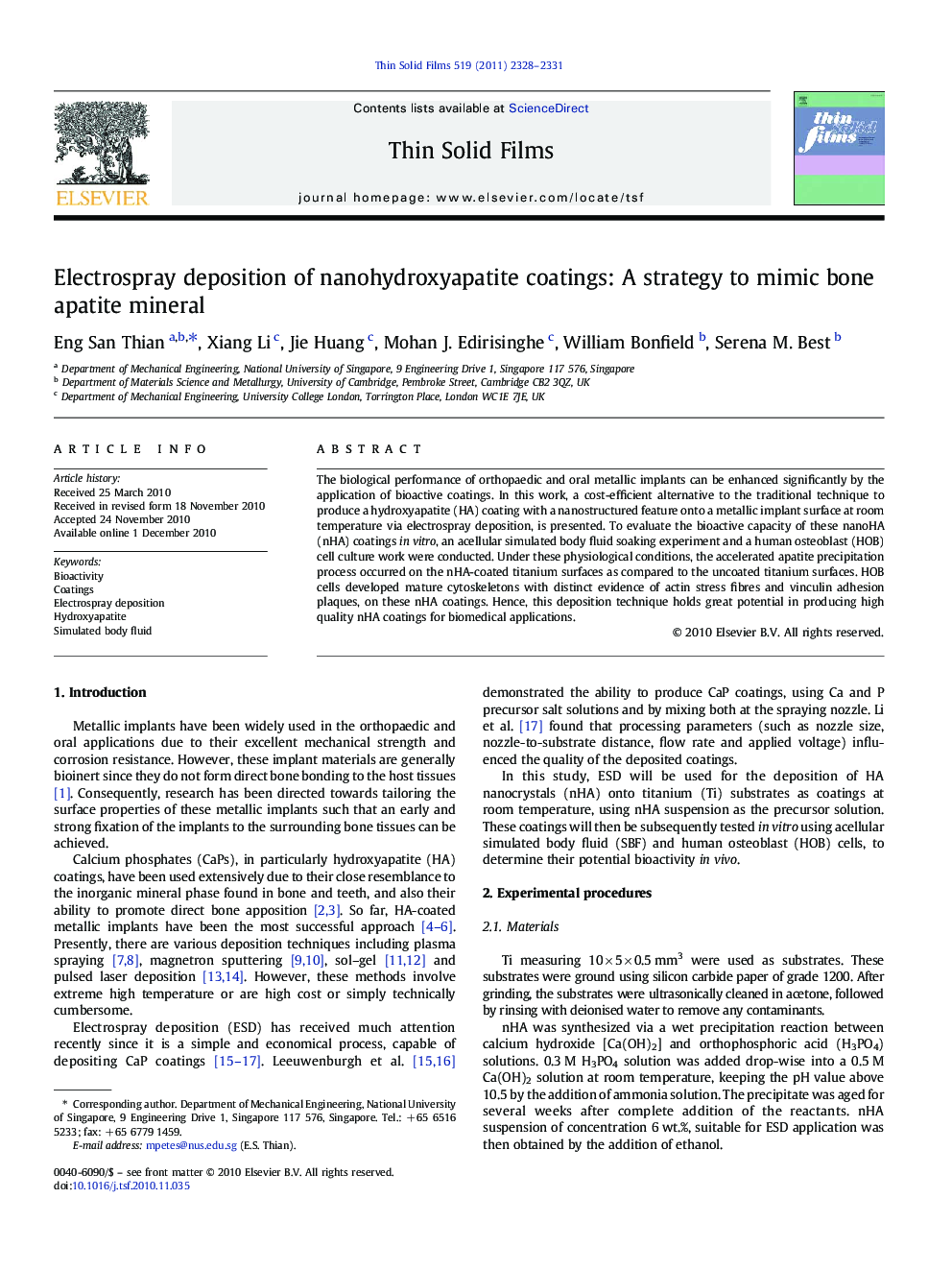| Article ID | Journal | Published Year | Pages | File Type |
|---|---|---|---|---|
| 1669264 | Thin Solid Films | 2011 | 4 Pages |
The biological performance of orthopaedic and oral metallic implants can be enhanced significantly by the application of bioactive coatings. In this work, a cost-efficient alternative to the traditional technique to produce a hydroxyapatite (HA) coating with a nanostructured feature onto a metallic implant surface at room temperature via electrospray deposition, is presented. To evaluate the bioactive capacity of these nanoHA (nHA) coatings in vitro, an acellular simulated body fluid soaking experiment and a human osteoblast (HOB) cell culture work were conducted. Under these physiological conditions, the accelerated apatite precipitation process occurred on the nHA-coated titanium surfaces as compared to the uncoated titanium surfaces. HOB cells developed mature cytoskeletons with distinct evidence of actin stress fibres and vinculin adhesion plaques, on these nHA coatings. Hence, this deposition technique holds great potential in producing high quality nHA coatings for biomedical applications.
